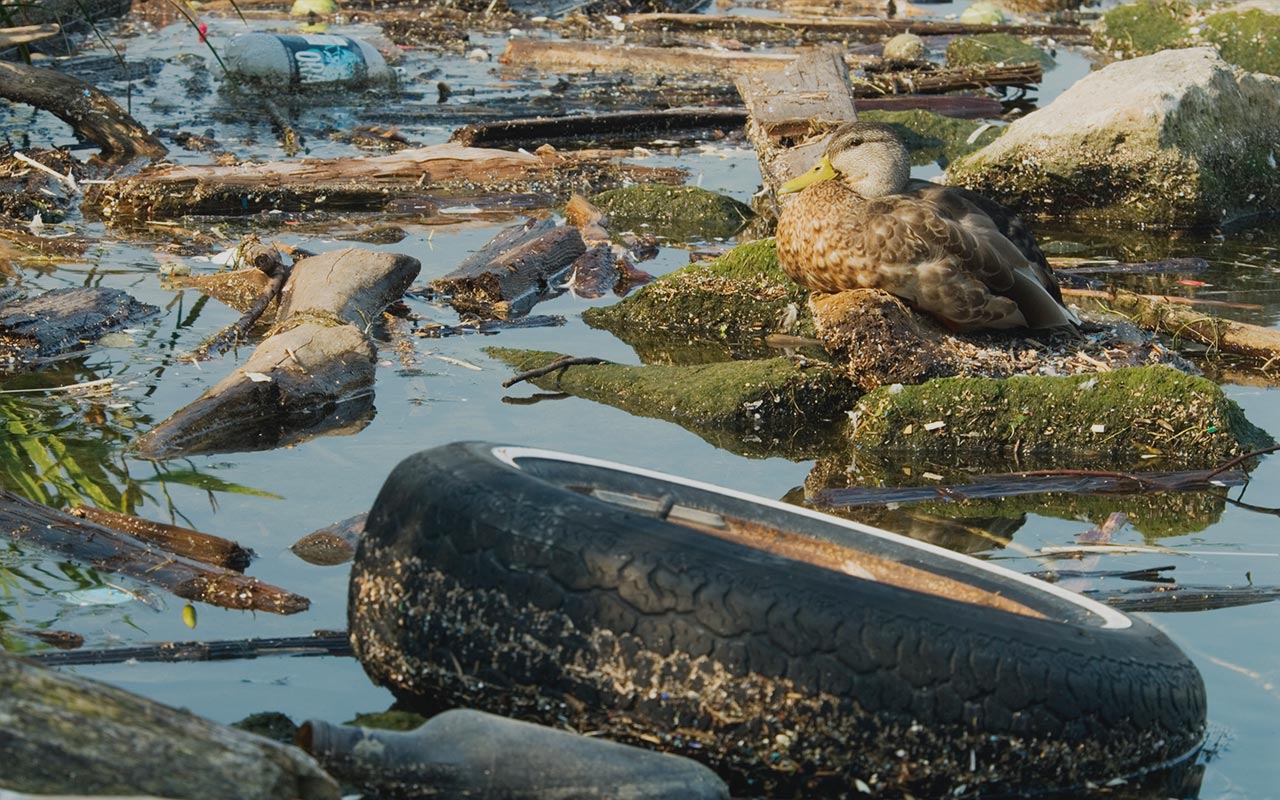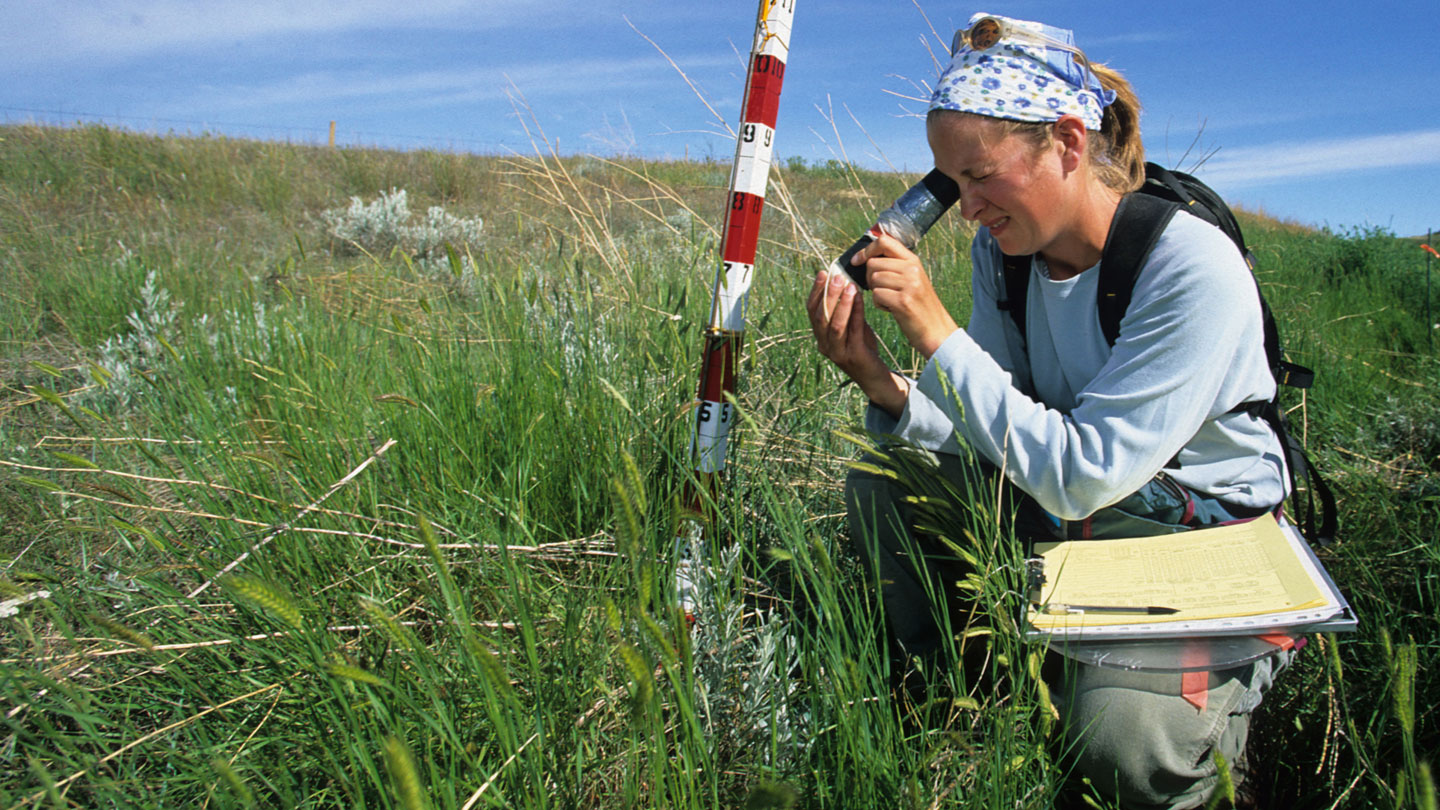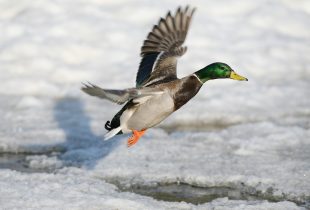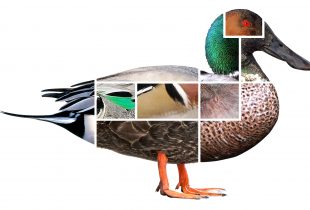How our work impacts conservation across Canada.
Where we’re working on the ground from coast to coast.
We need your help to protect our water, wildlife, and wetlands. Here’s how you can make an impact.
Get Involved
Waterfowl
It’s April on the prairies. Dark specks form lines against the sky. They shift and break as geese merge in and out of the formation. One after another, these lines spill northward, carrying a steady chorus of honks across the Canadian landscape. This is the sound of the returning spring.
Elsewhere, eiders are preparing to move. The large sea ducks pepper the east and west coasts during the winter. Now, some will make their annual journey to the Arctic to breed.
Many other waterfowl are taking part in the spring migration. These geese, swans and ducks follow their instincts like a compass, guiding them back to their northern breeding grounds. There, if all goes well, they will raise broods, feed and prepare to retrace their migration path in the fall.
Waterfowl rely on finding the resources they need when they arrive each spring. But it’s never a guarantee. Many species rely on two of the most threatened habitats in Canada during the breeding seasons: wetlands and grasslands.
If their habitat continues to disappear, the birds will disappear too.

Why Our Waterfowl Matter
The natural world is complex. It works best when it contains a diverse system of fish and wildlife. Waterfowl contribute to this system in many ways — as inhabitants, predators and prey.
We value wildlife as an essential part of the Canadian experience. For some, waterfowl are a sight to admire through a camera lens. For others, they are part of the fall harvest, a long-held tradition in some Canadians families. Through wildlife, our children learn about the natural world; that we are all connected.
The waterfowl that nest in Canada are also important to people beyond our borders. When they migrate each fall, they spread out across North America. Many birds that populate the United States and Mexico get their start in Canada.
Why Waterfowl Need our Help
More than 80 years ago, few people thought much of declining waterfowl populations. But hunters noticed. They understood the link between lost habitat and disappearing wildlife. The sportsmen of the 1930s knew that in order to save waterfowl, they needed to restore and protect wetlands. They formed Ducks Unlimited Canada for that purpose, which continues to guide our work today.

Habitat Loss
Waterfowl rely on habitat in Canada’s prairies, coastal areas and boreal forest to provide the necessities of life. In wetlands and grasslands, they find food, shelter and safe places to nest and raise their young. Unfortunately, these habitats are threatened in Canada:
- Canada has lost 75% of its original grasslands
- Canada has lost up to 70% of its original wetlands in settled areas
In Canada, wetlands and grasslands are being destroyed to make way for expanding farm fields, cities and resource extraction sites:
- Natural grasslands are being replaced by annual crops and industrial developments
- Wetlands are being drained so they can no longer hold water
Regulations in some provinces have evolved to protect habitat and encourage restoration. Other regions are doing little to address the problem.
Environmental factors
Wetlands are further damaged by invasive species. Non-native inhabitants can change the food supply and damage an entire ecosystem. Erosion and pollution also degrade water and shorelines. The loss of wetland vegetation compounds these problems, as the plants act as protective barriers and filters.

How We’re Saving Waterfowl
Saving habitat
Canadians need to hang on to the habitat we still have. Ducks Unlimited Canada is committed to this conservation cause. We work with landowners to save wetlands and grasslands on their properties. We work with industries to implement sustainable practices. We work with everyday Canadians who understand the dire need for conservation. To date, we have secured more than 6.4 million acres of habitat and positively influenced another 127 million acres.
Restoring habitat
Once they are destroyed, wetlands and grasslands can be difficult to restore. Our engineers and biologists are experts at bringing these habitats back to life. They also construct special projects to improve habitats degraded by development and invasive species. Historic wildlife havens like Delta Marsh in Manitoba, nearly destroyed by invasive carp, show promise for recovery thanks to our work.
Partnerships
Ducks Unlimited Canada has a long history of working with partners on large-scale conservation projects. We helped develop the North American Waterfowl Management Plan, which has secured nearly 20 million acres and restored over 3.5 million acres of wetlands and grasslands in Canada. We worked with the federal government to sign on to the Ramsar Convention, an international treaty to protect important wetlands. We have worked with regional, national and international governments to conserve wetlands and grasslands through regulations and incentive programs.
Research
Biology and ecology are at the core of conservation. We can’t help wildlife unless we understand their needs. We can’t make wise investments on their behalf without the same information. Ducks Unlimited Canada gathers this information through our science arm, the Institute for Wetland and Waterfowl Research. They show us the real consequences of habitat loss. They identify best practices for sustainability. They tell us what waterfowl need to thrive. As a science-based organization, we are confident that we are putting the right conservation programs in the right places, at the right times and for the right reasons.
Education
People need to know and care about conservation for it to succeed. Our education team is active in classrooms and interpretive centers across Canada. They spearhead activities at our Wetland Centers of Excellence, connecting students with the natural world. They are teaching the next generation of Canadians to get outside and experience nature. To appreciate the value of wetlands and waterfowl.


